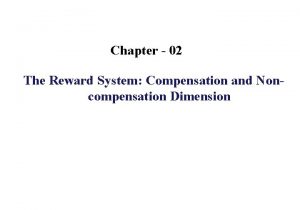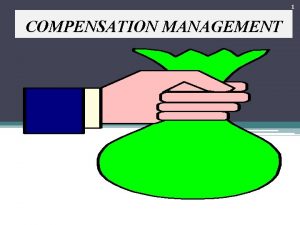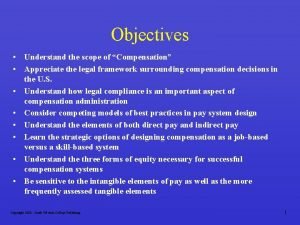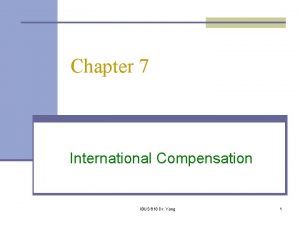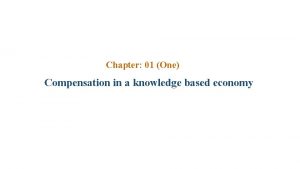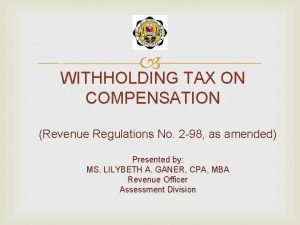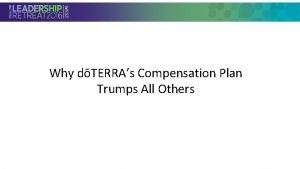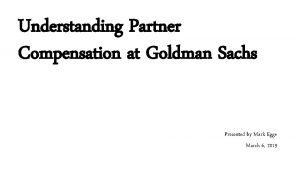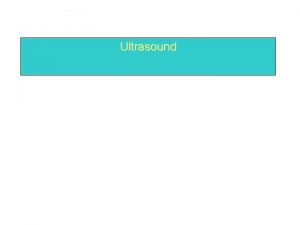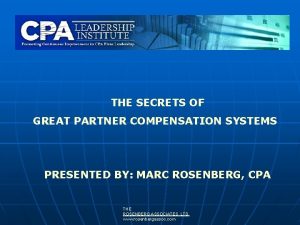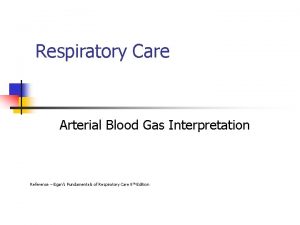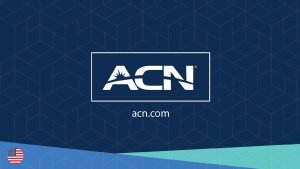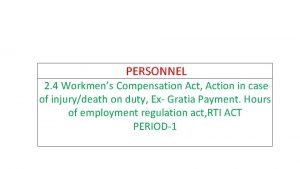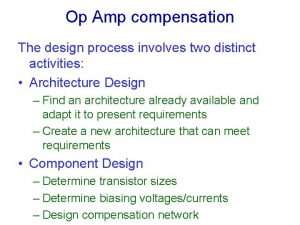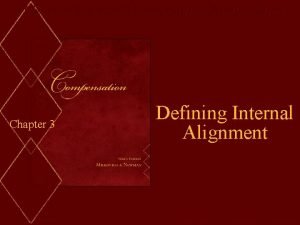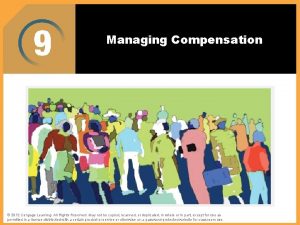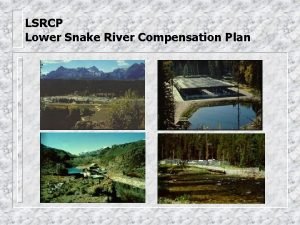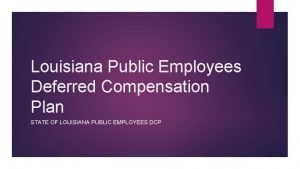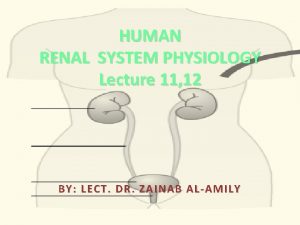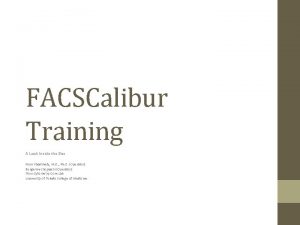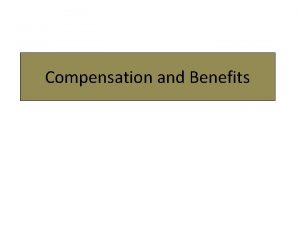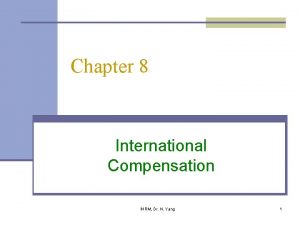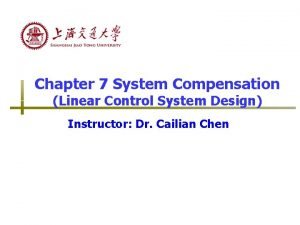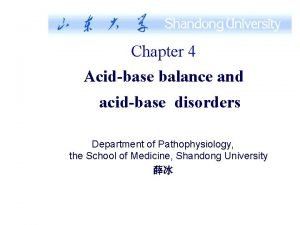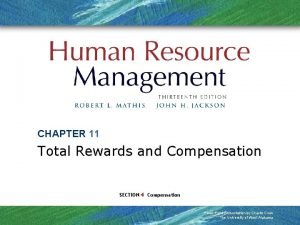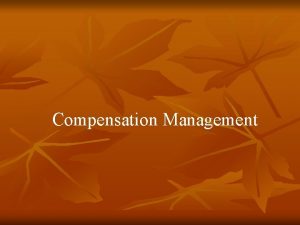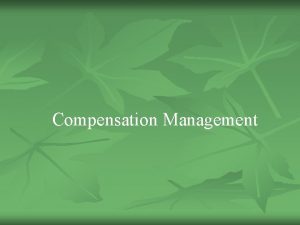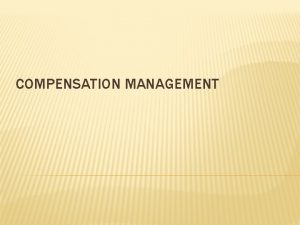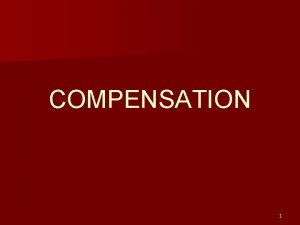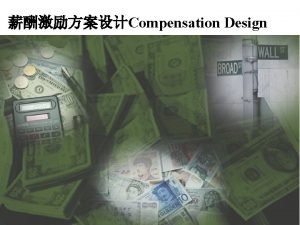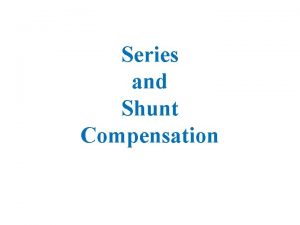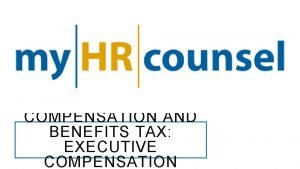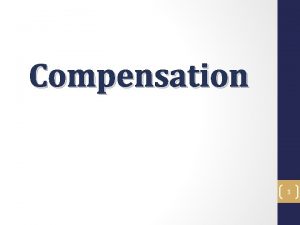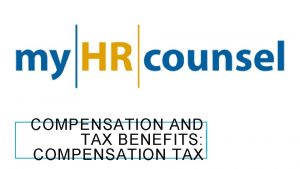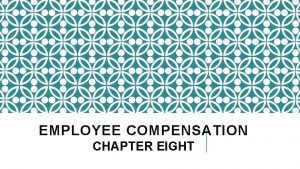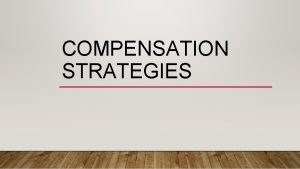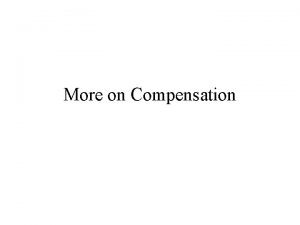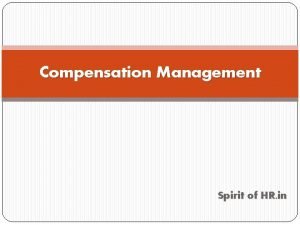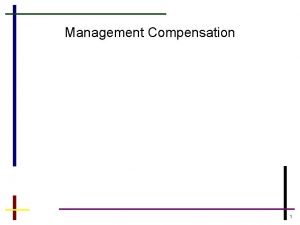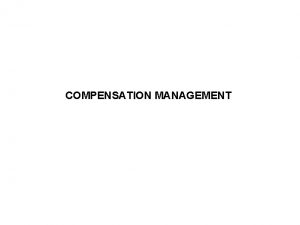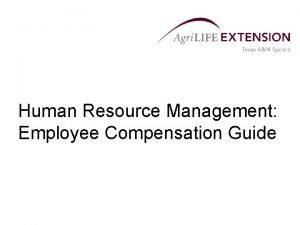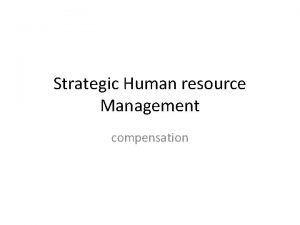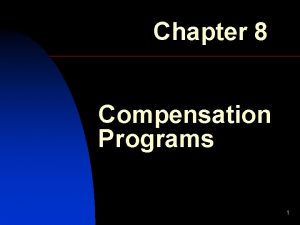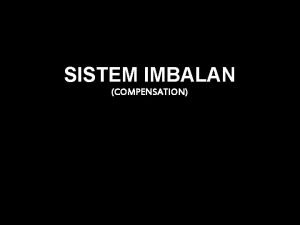1 COMPENSATION MANAGEMENT 2 What is Compensation Compensation









































- Slides: 41

1 COMPENSATION MANAGEMENT

2 What is Compensation? • Compensation is the total amount of the monetary and nonmonetary pay provided to an employee by an employer in return for work performed as required. • Refers to all forms of financial returns, tangible services and benefits employees receive as part of an employment relationship. • In HRM, compensation is referred to as money and other benefits received by an employee for providing services to his employer. • According to Casico, Compensation includes direct cash payments, indirect payments in form of employee benefits & incentives to motivate the employee to strive for higher levels of productivity

Examples of Job Evaluation Factors Skill Effort • • Education Experience Communication Complexity Mental Effort Problem Solving Concentration Working Conditions • • • Responsibility Financial Responsibility Supervision Freedom to Act Decision-making Contacts with others Operational Latitude Mental Demand Physical Effort Visual Demand

Need for Compensation • Most of the employees satisfaction and work performance are based on pay. • Internal inequalities in pay are more serious to certain employees • Employees compare their pay with that of others • Employees act only to gross external unfairness • Employees compare the pay of different employees with their skill

Concept of Compensation • Wage: ▫ hourly services • Salary: ▫ Monthly services • Earnings: ▫ Total earnings • Nominal Wage: ▫ Received in monitory terms • Take Home Salary: ▫ Net Salary • Minimum Wage: ▫ to meet nominal needs • Living Wage: ▫ includes amenities • Fair Wage: ▫ equal work • Incentive Wage: ▫ Over and above

A. Total Compensation = ▫ Direct compensation in the form of wages or salary Base pay (hourly, weekly, and monthly) Incentives (sales commissions or bonus) + ▫ Indirect compensation in the form of benefits Legally required benefits (e. g. , Social Security) Optional (e. g. , group health benefits)

B. Total Compensation = Financial + Non Financial • Non-Financial • The Job • Direct ▫ interesting, challenging, ▫ wages, salaries, commissions, responsible bonuses ▫ opportunity for recognition, • Indirect advancement ▫ insurance plans ▫ feeling of achievement life, health, dental, disability • Job Environment ▫ social assistance benefits ▫ policies, supervision, co retirement plans, social workers, status symbols, security, workers’ comp off working conditions, flextime, ▫ paid absences compressed work week, job sharing, telecommuting, vacations, holidays, sick flexible benefits programs leave

8 Objectives of compensation system v. Acquire qualified personnel v. Control costs v. Comply with legal regulations v. Facilitate understanding v. Attract & retain talent v. Emphasize and reward high-quality performance v. Allow personal growth v. Challenging and rewarding work assignments v. Formal (and informal) recognition of contributions.

9 How Compensation System is used Compensation is used to: 1. Recruit and retain qualified employees. 2. Increase or maintain morale/satisfaction. 3. Reward and encourage peak performance. 4. Achieve internal and external equity. 5. Reduce turnover and encourage company loyalty. 6. Modify (through negotiations) practices of unions.

Components of compensation system Job Descriptions : - define in writing the responsibilities, requirements, functions, duties, location, environment, conditions, and other aspects of jobs 1. Job Analysis : - The process of analyzing jobs from which job descriptions are developed. 2. Job evaluation : - for comparing jobs for the purpose of determining appropriate compensation levels for individual jobs or job elements q. Pay Structures : - based on several grades pay structure is determined through collective bargaining (unions) q. Salary Surveys : - May include average salaries, inflation indicators, cost of living indicators, salary budget averages

Different types of compensation system • • • Base Pay Commissions Overtime Pay Bonuses, Profit Sharing, Merit Pay Travel/Meal/Housing Allowance Benefits including: dental, insurance, medical, vacation, leaves, retirement, taxes. . .

12 Advantages and Disadvantages Incentives Advantages 1. Focus on hitting target Financial Non Financial 2. Achievement a given value 1. Can recognize employee priorities and lifestyle 2. Can encourage attachment to business Disadvantages 1. Rewards are sometimes small 2. Can demoralize if not earned 1. Can be taken for granted 2. May be inappropriate

13 Reasons For Introducing An Incentive Scheme 1. Increase in earnings for employees? 2. Increase in output? 3. Improvement in quality? 4. Better mobility of labour? 5. More efficient methods of working? 6. Improvement in safety? 7. Higher housekeeping standards? 8. Reduction in absenteeism? 9. Reduction in labour turnover? 10. Reduction in overtime working?

Compensation structure q Basic salary : q Savings : - SPF, LIC, PPF, NSC, MIS q Bonus q Arrears q Medical allowance q Education allowance q Price q Stocks q Salary of an employee

ELEMENTS OF TOTAL COMPENSATION Total Compensation Base Compensation Incentive Compensation / Variable compensation Supplementary compensation paid to large group of employees

A. BASE COMPENSATION ØBasic pay fixed to various categories of jobs, post or positions –> Basic Pay/ Scale of Pay ØPaid mostly in monetary terms -> Monetary Compensation ØFactors considered in the process: § Job Content – the job expected to be carried out by the employee and his worth to be on that particular job; § Bargaining Power of the trade union, or that of the employee, representing the trade or the job; § Demand-supply interplay or the specific category of jobs or positions; § Remuneration level in the industry, identical firms or the firms in the locality for the specific job; § Ability of the firm to pay; § Productivity, profitability and financial position of the firm; § Cost/Standard of living in the environment of the organization; § Government Regulations.

B. INCENTIVE COMPENSATION Ø A good incentive system motivates people to put in their best efforts to perform well. Ø Commonly used to motivate people at work. Ø Steps of the process: 1. Fixation of Performance Standards 2. Fixation of specific Incentive Schemes 3. Linking of performance levels with organizational objective 4. Classification of performance standards 5. Periodical feedback 6. Conspicuous Incentive 7. Constitution of a committee for the administration of incentive schemes 8. Linking of HRD programs with incentive schemes 9. Publication of names of recipients 10. Awards and Promotions 11. Honor of Incentive-takers 12. Incentive scheme and Corporate Policy

EXAMPLES: FINANCIAL Ø Profit-related and share option schemes Ø Bonuses Ø Commission NON-FINANCIAL Ø Vouchers Ø Extra holidays Ø Gifts Ø Company Cars

C. SUPPLEMENTARY COMPENSATION It includes additional annual wage, employee profit sharing (present day bonus), production sharing plans, employee’s equity participation as an additional bonus

Employee Absenteeism • Absenteeism ▫ Any failure to report for work as scheduled or to stay at work when scheduled. ▫ Involuntary absenteeism Unavoidable with understandable cause (e. g. , actual illness) ▫ Voluntary absenteeism Avoidable without justifiable cause (e. g. , pretending illness)

FIGURE 3 -5 Reasons for Unscheduled Absences

Employee Absenteeism Control Actions

HR Metrics: Measuring Absenteeism • Measuring Absenteeism ▫ U. S. Department of Labor formula: • Other Measures of Absenteeism: ØIncidence rate—absences per 100 employees each day ØInactivity rate—percentage of time lost to absenteeism ØSeverity rate—average time lost per absent employee during a specified period of time

HR Metrics: Measuring Absenteeism (cont’d) • Calculations of the costs of absenteeism should usually include: ▫ Lost wages ▫ Benefits ▫ Overtime for replacements ▫ Fees for temporary employees, if incurred ▫ Supervisor’s time ▫ Overstaffing necessary to cover absences

25 Labour turnover • In human resources context, turnover or staff turnover or labour turnover is the rate at which an employer loses employees. Simple ways to describe it are "how long employees tend to stay" • The ratio of the number of employees that leave a company through attrition, dismissal, or resignation.

Employee Turnover • Turnover ▫ The process in which employees leave an organization and have to be replaced. • Impact of Turnover ▫ Inability to achieve business goals ▫ Loss of “image” to attract other individuals ▫ High costs of turnover and replacement Churn—hiring new workers while laying off others

Types of Turnover Involuntary Controllable Voluntary Turnover Uncontrollable Functional Dysfunctional

HR Metrics: Measuring Turnover • Computing the Turnover Rate: • Costs of Turnover ØSeparation costs ØReplacement costs ØTraining costs ØHidden costs

HR Metrics: Measuring Turnover (cont’d) • Ways to Measure Turnover: ▫ ▫ ▫ ▫ Job and job levels Department, units, and location Reason for leaving Length of service Demographic characteristics Education and training Knowledge, skills and abilities Performance ratings/levels

Internal mobility • The lateral or vertical movement of an employee within an organization is called as internal mobility. It may be in the form of promotion, transfer or demotion Purposes of internal mobility • Improve organizational effectiveness‐ Organizations want to be lean and clean. To this • end, structural defects may have to be eliminated; unwanted positions removed • Other jobs redesigned. Internal mobility increases every such change within an organization. • Improve employee effectiveness‐ • Adjust to changing business operations • Ensure discipline

Promotion • Promotion refers to upward movement of an employee from current job to another with in the organization that is higher in pay, responsibility and organization level. Definition • “Promotion is advancement of an employee to a better job‐ better in terms of greater responsibility, more prestige, greater skill and increased pay or salary. ”

Purpose of Promotion • To utilize the employee’s Knowledge, skill and abilities to the fullest extent. • To inculcate competitive spirit in the employees. • To develop competent internal source of employees ready to take up jobs at higher levels. • To promote employee’s self development. • To promote interest in training and development programmes. • To reward committed and loyal employees. • To encourage the employees to remain loyal and committed to their jobs

Promotion Policy • Establish a fair and equitable basis for promotion. • Should provide equal opportunities for promotions in all categories of jobs and departments. • Policy should be applied uniformly to all employees irrespective of the background of the person. • Ensure an open policy • Norms of judging merit, length of service, potentiality, performance etc must be established. • Appropriate authority should be entrusted. • Mode of acquiring new skills, knowledge etc should be specified to all the employees. • Detailed records of service, performance etc has to be maintained and • Should contain alternatives to promotion

Bases of Promotion 1. Merit based promotion – occur when an employee is promoted because of superior performance in the current job. • Merit here denotes an individual’s knowledge, skills, abilities and efficiency as measured from his or her education, experience, training and past employment record. Advantages 1. Motivates employees to work hard, improve their knowledge, acquire new skills and perform efficiently. 2. Helps the employer to recognize and reward the meritorious or efficient employees. 3. It inspires other employees to improve their standards of performance Disadvantages 1. It is not easy to measure merit. 2. When young employees get ahead of other senior employees in an organization, frustration and discontentment may spread among the ranks.

2. Seniority based promotion Seniority refers to the relative length of service in the same organization. Advantages : 1. It is easy to measure the length of the service. 2. There is no scope for favouritism, discrimination and subjective judgment. 3. Senior employees will have a sense of satisfaction. 4. Full support of the trade unions. Disadvantages: 1. The assumption that employees learn more with the time is not true. 2. It demotivates young and more competent employees. 3. It kills the zeal and interest to develop as every body will be promoted with or without improvement. 4. Organizational effectiveness may be diminished.

3. Merit cum seniority 1. Minimum length of service and merit 2. Minimum merit and seniority

Benefits of Promotion • Increases interest in acquiring higher qualifications, skill enhancement and self development. • Improves employee morale and job satisfaction. • Improves organizational health. • Employee’s skills and knowledge can be better utilized. • Inculcates competitive spirit in the employees. Problems of promotion • Promotion disappoints some employees. • Some employees may refuse promotion. • (Promotion with transfer, delegation of unwanted responsibility, trade union leaders may feel that promotion effects their position

DEMOTION • Demotion is the downward movement of an employee in the organizational hierarchy with lower status and pay Causes: 1. Unsuitability of the employees to higher level of jobs 2. Adverse business conditions 3. Disciplinary tool

TRANSFERS A lateral shift causing movement of individuals from one position to another usually without involving any marked change in duties, responsibilities and compensation. Purposes of Transfer / Reasons for Transfer • To meet the organizational requirements. • To satisfy the employee needs. • To utilize the employee’s in a better manner. • To make the employee’s more versatile. • To provide relief. • To reduce conflicts. • To punish employees.

Types of transfer • Production transfer‐ Transfers caused due to changes in production. • Replacement transfer –Transfers caused due to replacement of a long standing employee in the same job. • Rotation transfer‐transfers initiated to increase the versatility of employees. • Shift transfer‐transfer of an employee from one shift to another. • Remedial transfer‐transfers initiated to correct wrong placements. • Penal transfer – transfers initiated as a punishment for indisciplinary action of employees. Benefits of transfer • Reduces Employees monotony and boredom. • Increases job satisfaction. • Enhances employees skills and knowledge. • Corrects erroneous placement. • Avoids inter‐personal conflicts. • Prepares the employees to meet organizational exigencies

• Problems • Adjustment problems. • Inconvenience and cost to the employees. • Loss of man days. • Reduction in– employee’s contribution, job satisfaction, morale and Commitment.
 Compensation and non compensation dimensions
Compensation and non compensation dimensions Objectives of compensation management
Objectives of compensation management Scope of compensation
Scope of compensation International compensation objectives
International compensation objectives Classü
Classü Pyramid levels of management
Pyramid levels of management Management pyramid
Management pyramid Middle level management
Middle level management Indirect financial compensation
Indirect financial compensation Wtax compensation table
Wtax compensation table Doterra comp plan
Doterra comp plan Goldman sachs partner compensation
Goldman sachs partner compensation Piezoelectric effect ultrasound
Piezoelectric effect ultrasound Point de compensation photosynthèse
Point de compensation photosynthèse Minder grinder finder
Minder grinder finder Conference point shaklee
Conference point shaklee Abgs examples
Abgs examples Acn payment plan
Acn payment plan Point de compensation photosynthèse
Point de compensation photosynthèse Schedule 4 of workmen compensation act
Schedule 4 of workmen compensation act Pole splitting miller compensation
Pole splitting miller compensation Milkovich newman compensation, 9th edition pdf
Milkovich newman compensation, 9th edition pdf Cms compensation rules for msa and pdp
Cms compensation rules for msa and pdp Compensation scorecard examples
Compensation scorecard examples Lower snake river compensation plan
Lower snake river compensation plan Louisiana deferred compensation program
Louisiana deferred compensation program Longrich marketing plan
Longrich marketing plan Compensation plan
Compensation plan Mba compensation and benefits
Mba compensation and benefits Respiratory alkalosis renal compensation
Respiratory alkalosis renal compensation Uces dispute letters
Uces dispute letters Fair pay for northern california nonprofits
Fair pay for northern california nonprofits Facscalibur compensation
Facscalibur compensation Ethics in compensation
Ethics in compensation Cpcs category 3
Cpcs category 3 Compensation system meaning
Compensation system meaning Going rate approach
Going rate approach Lead compensator
Lead compensator Calcite compensation depth
Calcite compensation depth Respiratory alkalosis renal compensation
Respiratory alkalosis renal compensation Compensation approaches
Compensation approaches Change your water change your life
Change your water change your life
